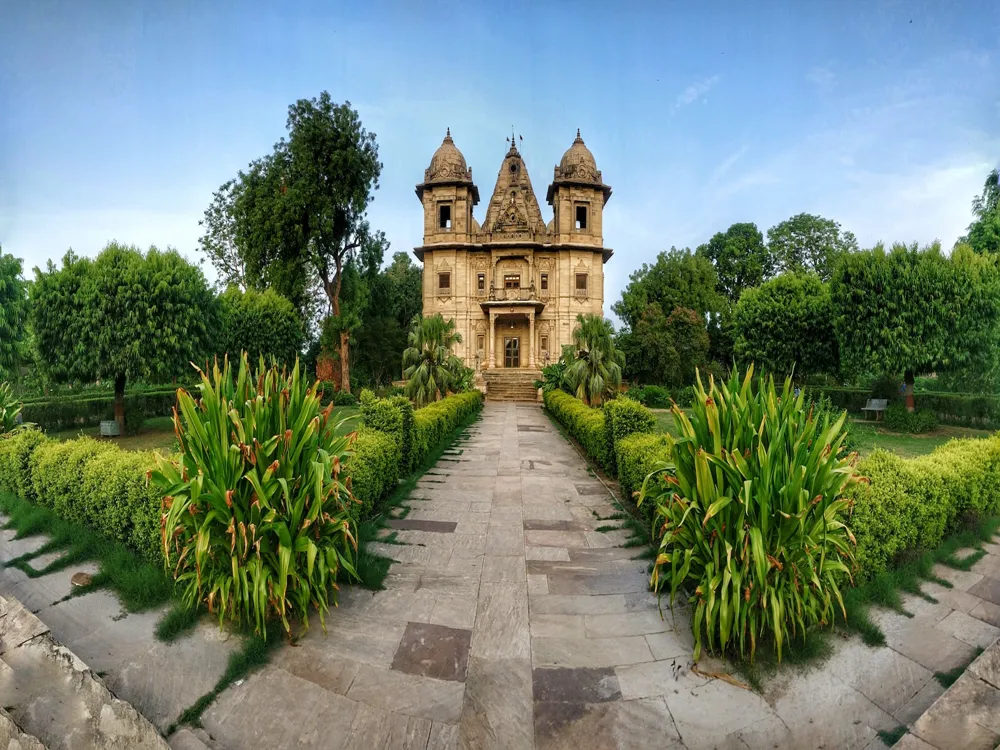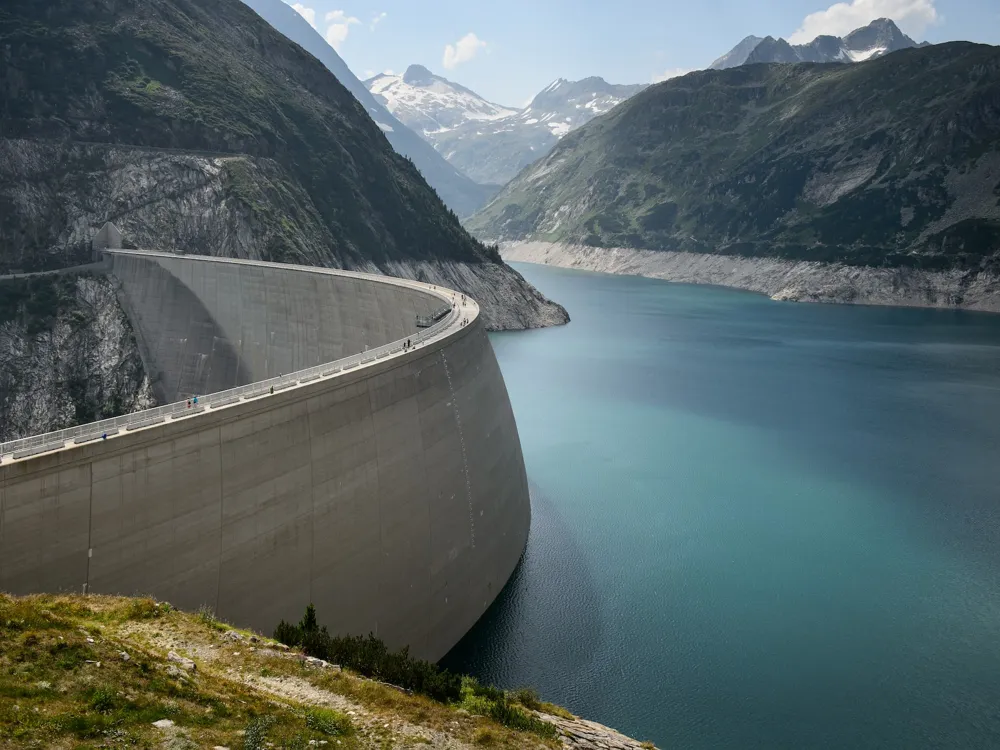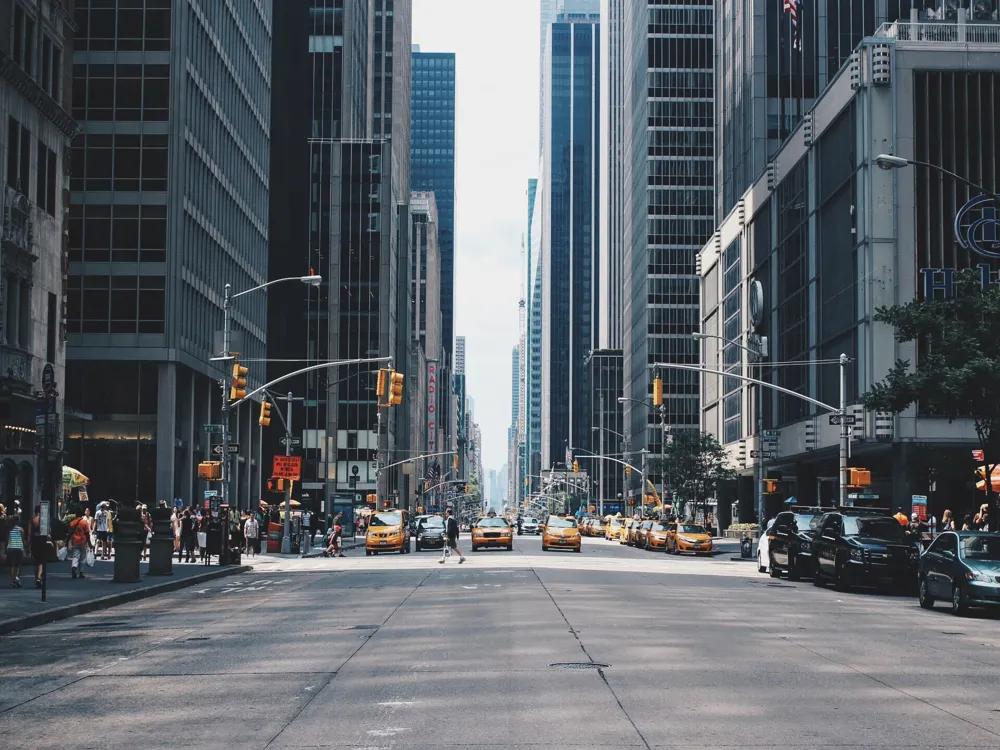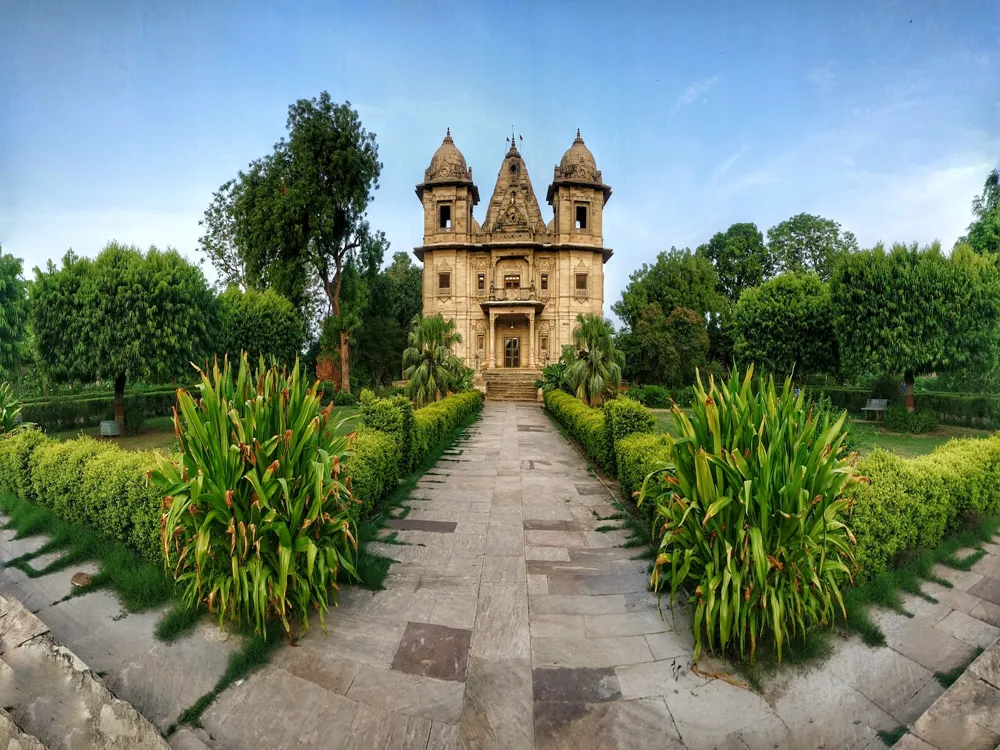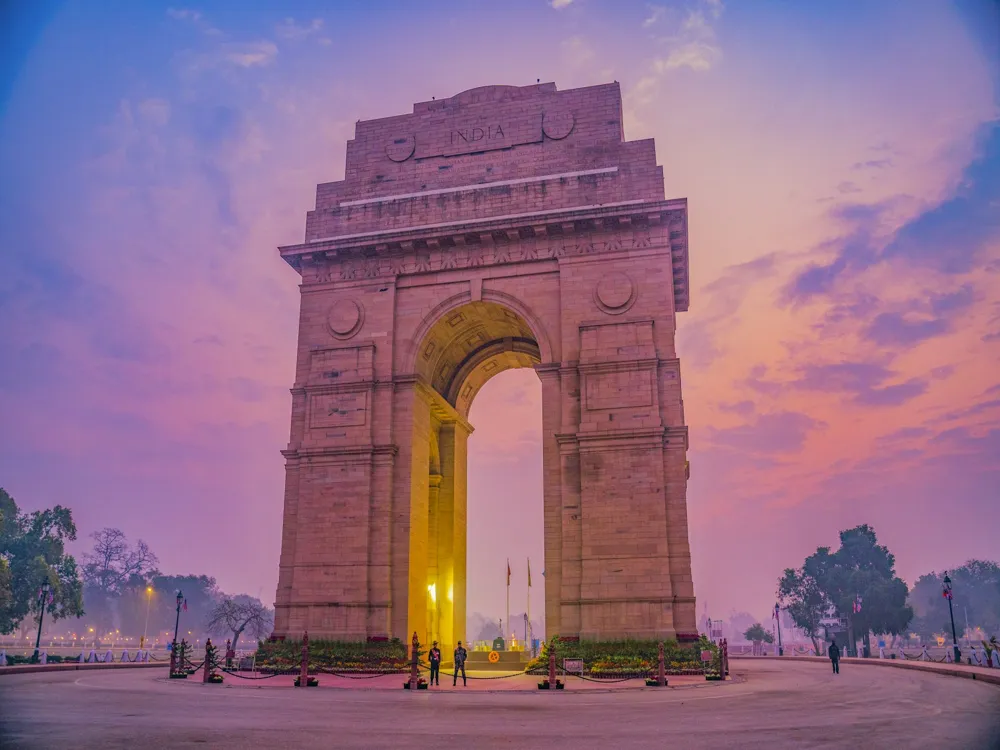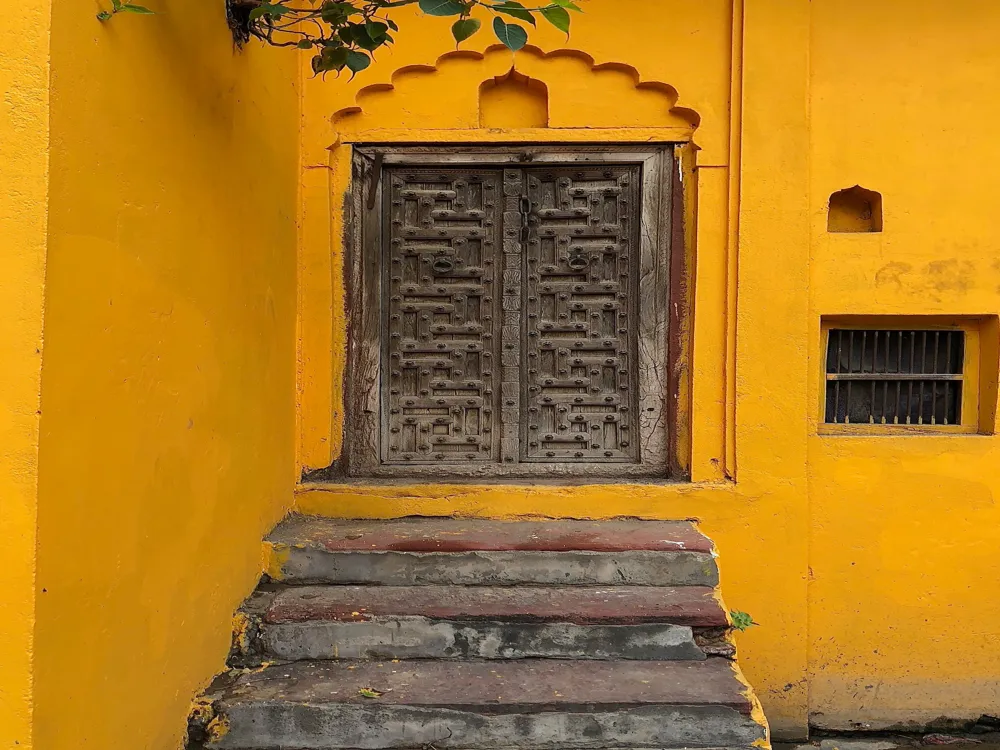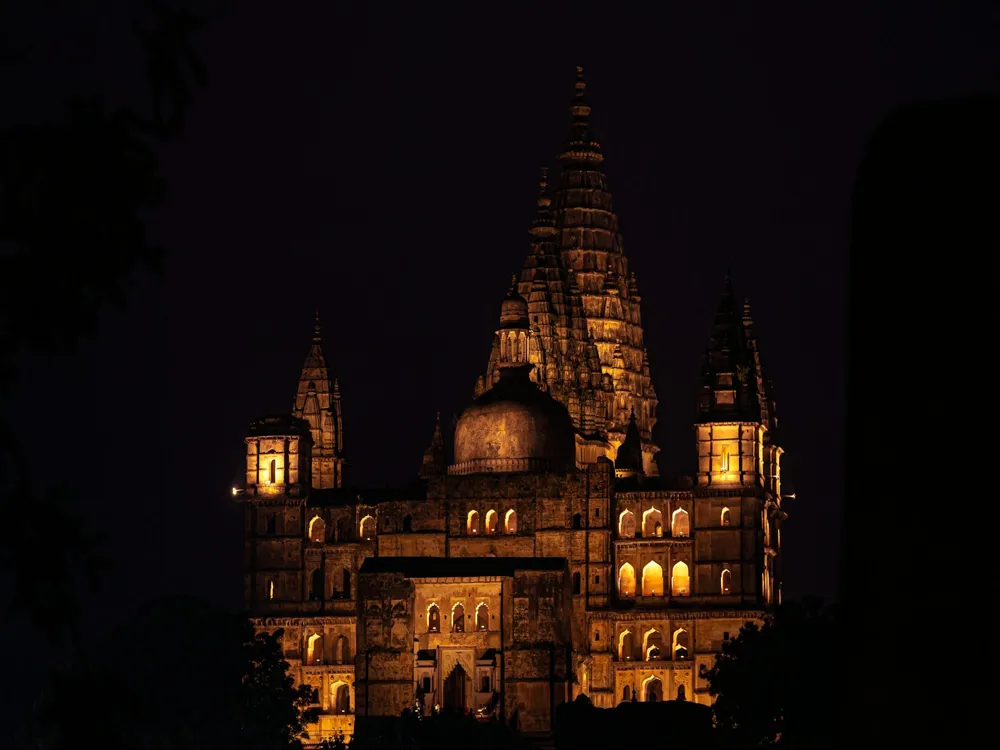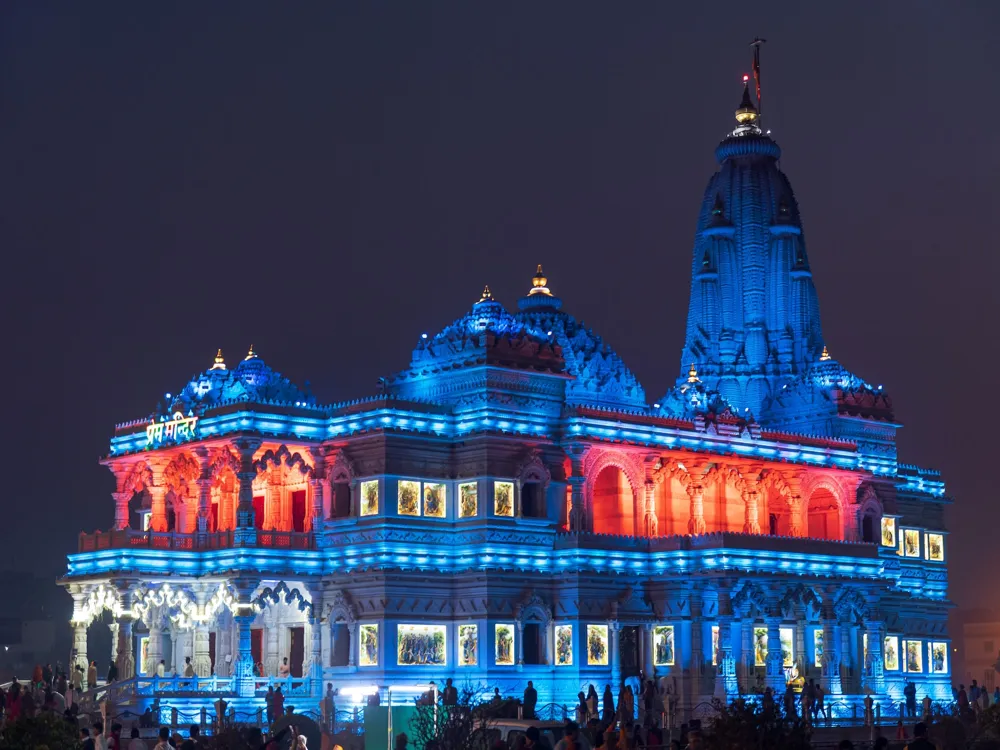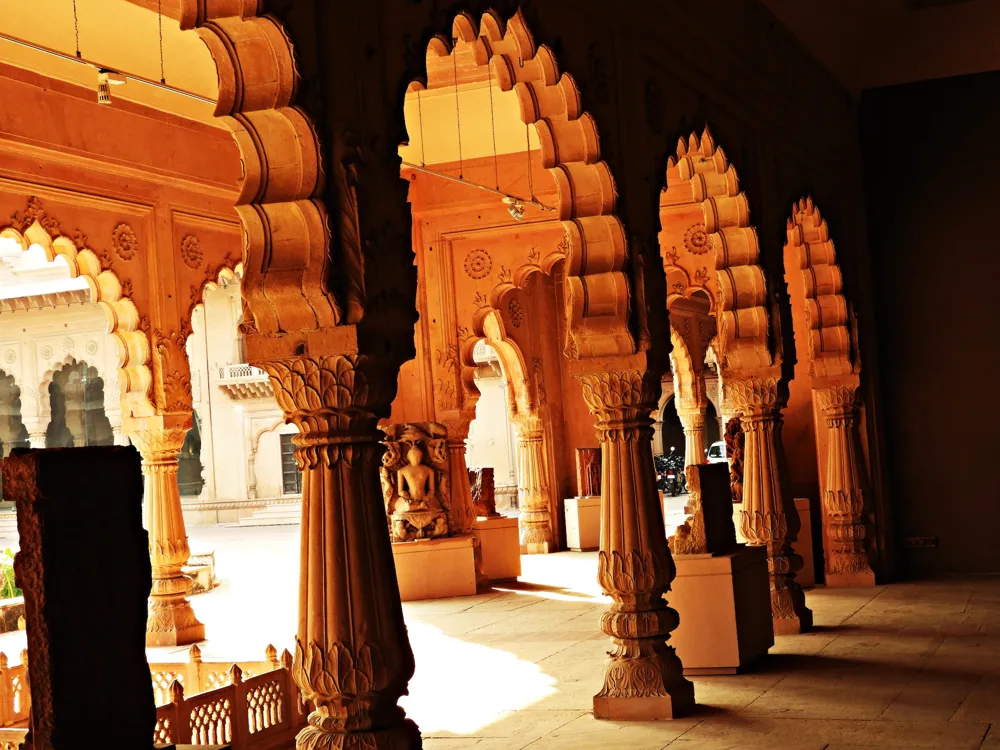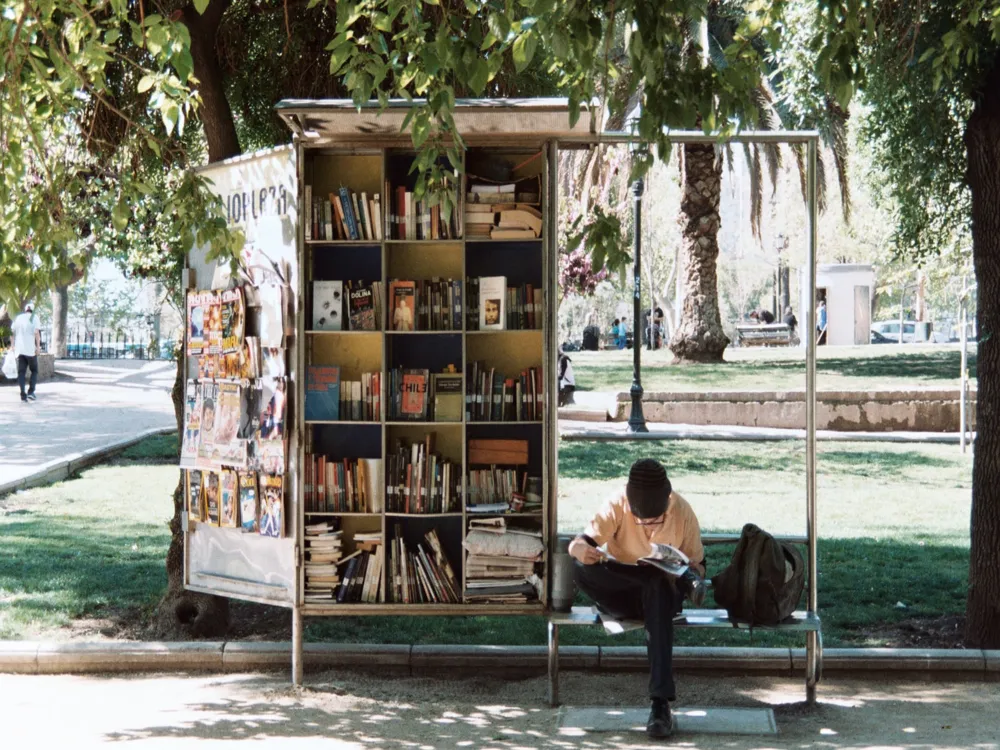The Gujari Mahal, located in Gwalior, Madhya Pradesh, is a stunning example of medieval architecture. Built by Raja Man Singh for his queen Mrignayani in the 15th century, it now serves as the State Archaeological Museum, housing rare artifacts and sculptures that reflect the rich cultural heritage of the region. The architecture of Gujari Mahal is a blend of Hindu and Muslim styles, featuring intricate stone carvings, robust fortifications, and beautifully designed rooms. The museum showcases an extensive collection of Hindu and Jain sculptures, along with other significant historical objects, providing a deep insight into the art and culture of the period. The best time to visit Gujari Mahal is between October and March when the weather is pleasant. Visitors are advised to dress modestly, keeping in mind the cultural significance of the place. Photography might be restricted in certain areas of the museum; it's advisable to check with the authorities beforehand. Gujari Mahal is easily accessible from all parts of Gwalior. It is located near the Gwalior Fort and can be reached by taxi, auto-rickshaw, or local bus. The nearest railway station is Gwalior Junction, which is well-connected to major cities in India. Read More:Overview of Gujari Mahal (State Archaeological Museum), Gwalior, Madhya Pradesh
Architecture of Gujari Mahal (State Archaeological Museum)
Tips When Visiting Gujari Mahal (State Archaeological Museum)
Best Time to Visit
Dress Code
Photography Restrictions
How To Reach Gujari Mahal (State Archaeological Museum)
Gujari Mahal (State Archaeological Museum)
Gwalior
Madhya Pradesh
NaN onwards
View gwalior Packages
Also Refered As:
State Archaeological Museum
Gwalior Travel Packages
View All Packages For Gwalior
Top Hotel Collections for Gwalior

Private Pool

Luxury Hotels

5-Star Hotels

Pet Friendly
Top Hotels Near Gwalior
Other Top Ranking Places In Gwalior
View All Places To Visit In gwalior
View gwalior Packages
Also Refered As:
State Archaeological Museum
Gwalior Travel Packages
View All Packages For Gwalior
Top Hotel Collections for Gwalior

Private Pool

Luxury Hotels

5-Star Hotels

Pet Friendly







